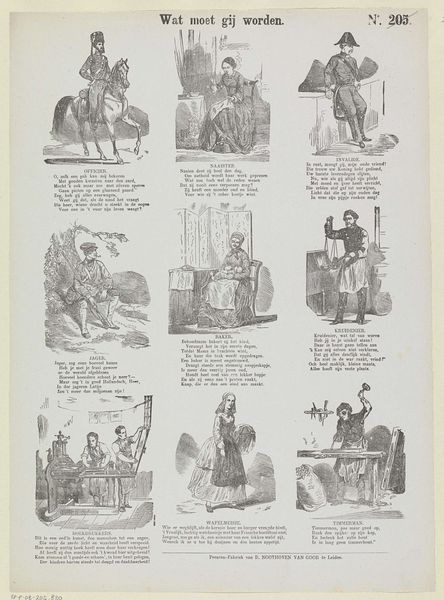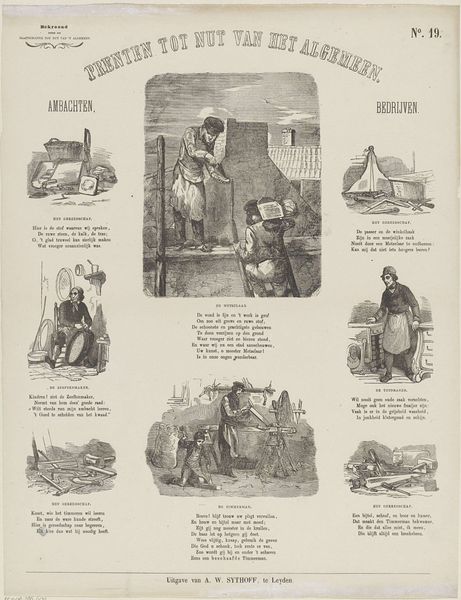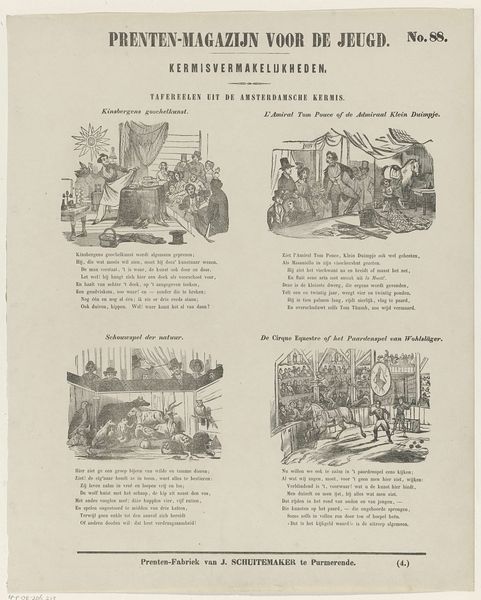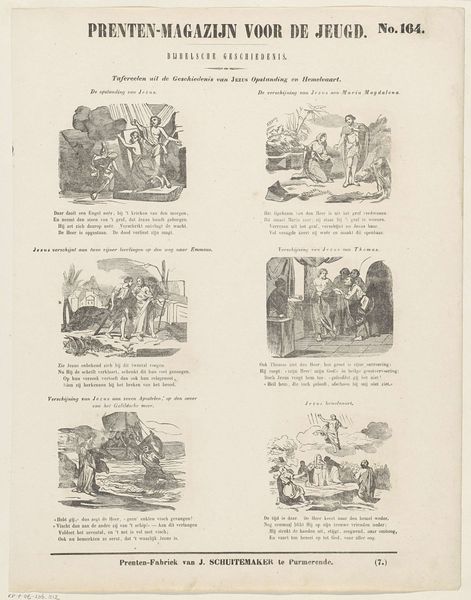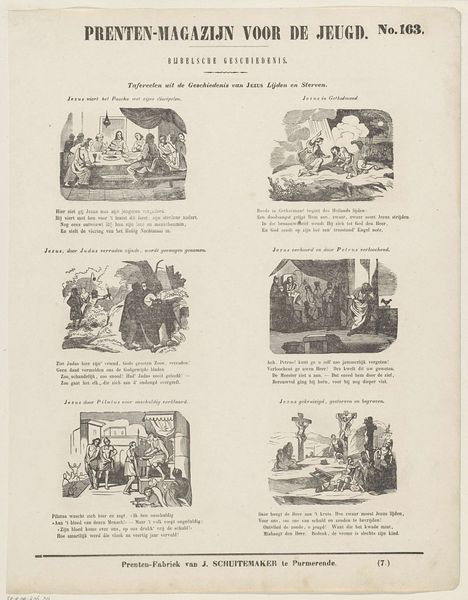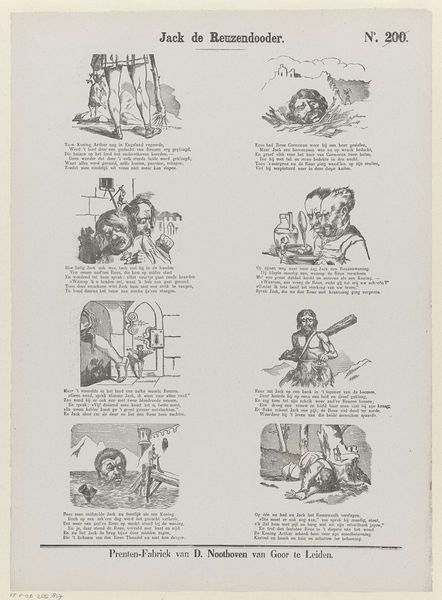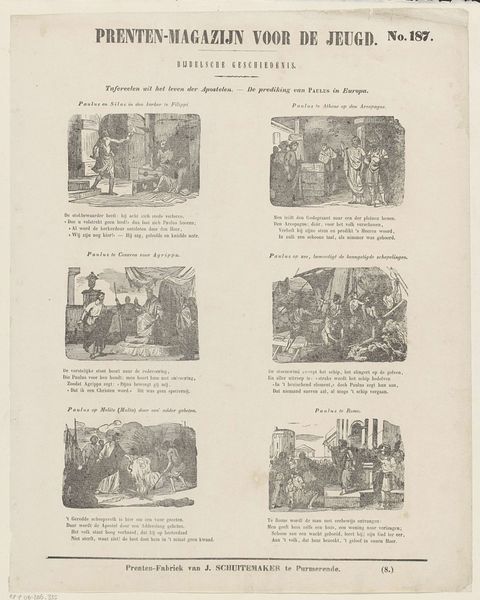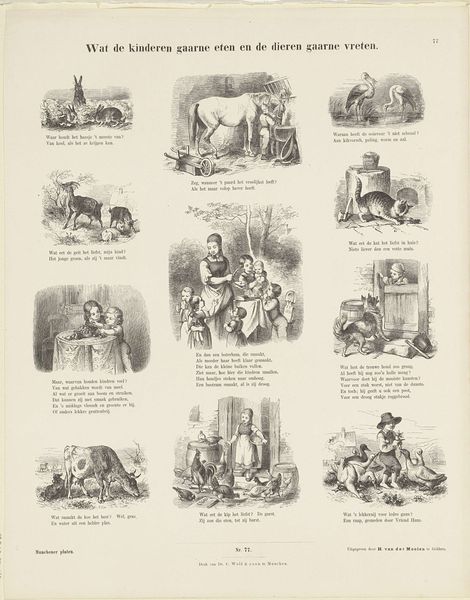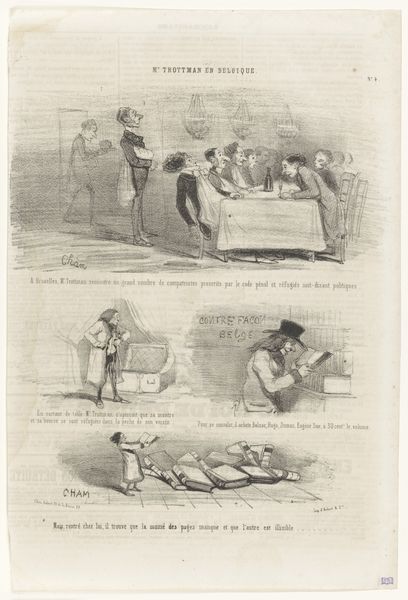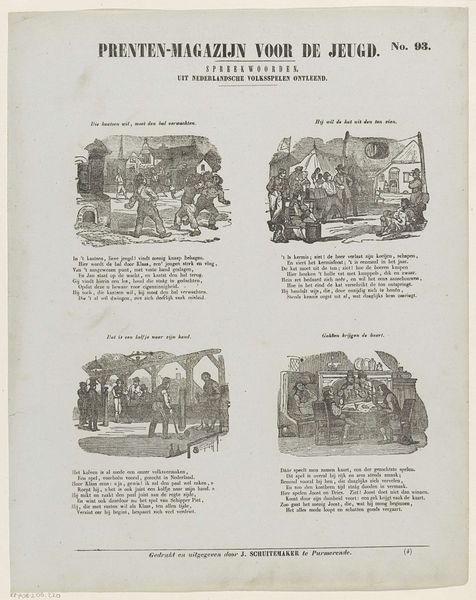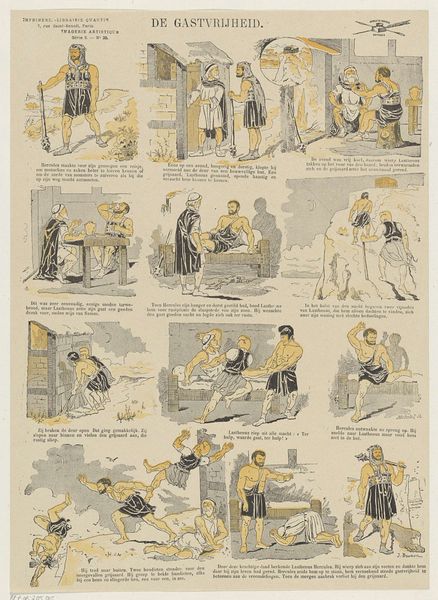
drawing, graphic-art, print, etching, ink
#
drawing
#
graphic-art
#
narrative-art
#
comic strip
# print
#
etching
#
ink
#
genre-painting
#
realism
Dimensions: height 425 mm, width 302 mm
Copyright: Rijks Museum: Open Domain
Curator: Alright, let's have a closer look at "Hoe men zijn kost verdient" by Dirk Noothoven van Goor. It’s an etching from sometime between 1850 and 1881, part of the graphic arts. Editor: Immediately, what strikes me is how it resembles an early comic strip. Nine panels, each showing a different occupation with accompanying verses… it's a beautiful snapshot of ordinary life. It has a kind of working-class poetry. Curator: Exactly. The print provides us with a cross-section of Dutch society at the time, doesn’t it? Each little scene—the butcher, the fruit seller, the landman—tells a story, reflecting the socio-economic structure and realities of labor in the Netherlands then. The question arises if we are supposed to smile, or grimace in light of such heavy toil! Editor: And I wonder about the verses, if they offer commentary or just simply describe each scene. Were they critical or simply celebratory? I think there might be a wink in those illustrations as well, the butcher wielding his knife or the landman pushing with his animals through the mud. What do you reckon? Curator: It’s really tricky because the prints would likely be sold in mass numbers to lower social classes. Perhaps the verses were intended as simple explanations but maybe were indeed a window of expression through satire of the era, yes. Editor: Perhaps that's why there is no central story beyond all the occupations in tandem… It makes me ponder how we think about ‘value’ and ‘work’ itself now, and who gets seen— or unseen. I love the raw simplicity. The way he depicts these very common workers with no romantic embellishment. It feels refreshingly honest. Curator: Absolutely. And think about the audience, encountering this. Prints like these weren’t just aesthetic objects; they were carriers of social values and narratives that shaped how people viewed their roles in society. Editor: Food for thought indeed. It encourages a slower observation, a bit of historical empathy maybe, to the era it showcases. Curator: Right you are. Thank you, Editor.
Comments
No comments
Be the first to comment and join the conversation on the ultimate creative platform.
